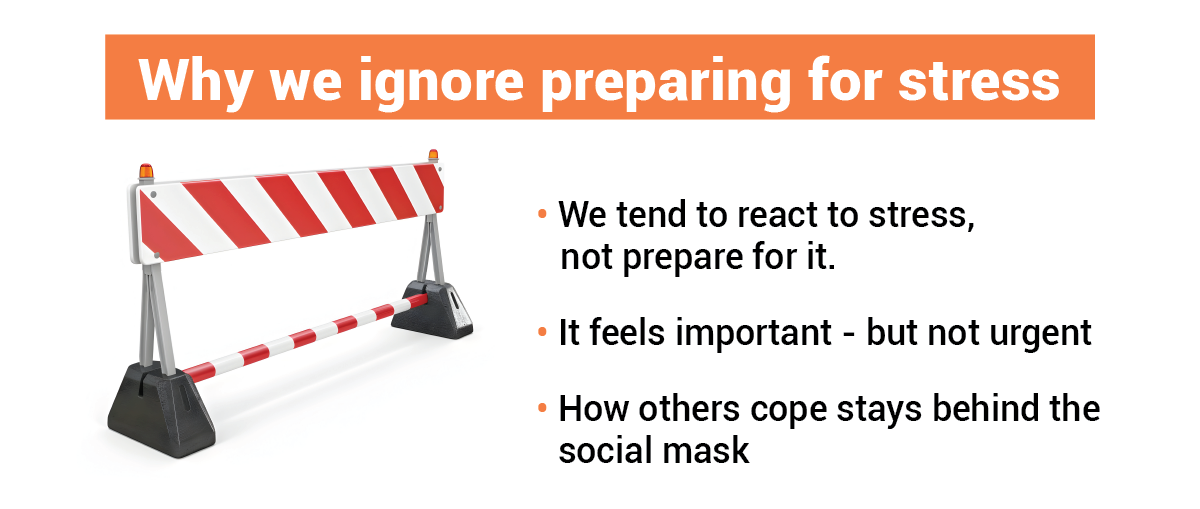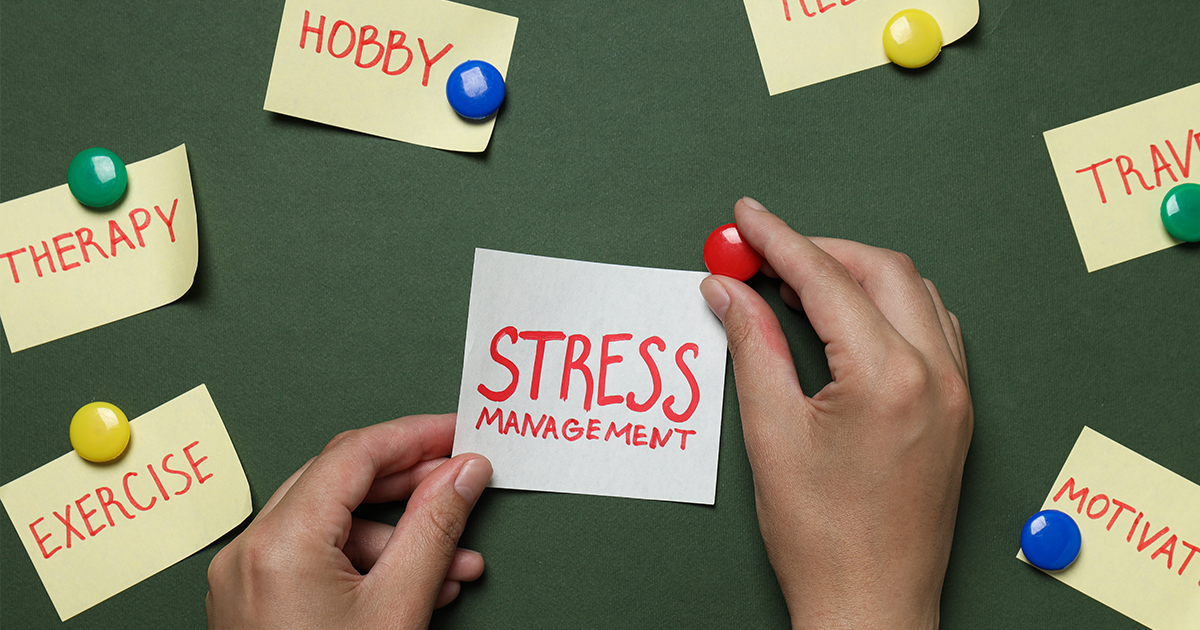The Best Stress Management Strategies Work Before Stress Sets In
Stress is one of the most constant forces in our lives. It affects how we think, feel, perform, connect, and recover. Whether it’s a looming deadline, a tense conversation, or the strain of managing too much at once, stress shows up regularly. And that’s not always a bad thing. Moderate stress can sharpen focus, fuel motivation, and even support personal growth.
But when stress becomes unmanageable or emotionally toxic—and we lack effective coping—it begins to wear us down. It can disrupt our sleep, weakens immunity, strain relationships, and chip away at our long-term health. And yet, most of us spend far less time learning stress management strategies than we do planning a vacation, managing finances, or advancing our careers.
Why Don’t We Learn Stress Management Proactively?
There are three key reasons:
1. We treat stress as something to react to, not prepare for.
Stress management is rarely viewed as a skill to build in advance. Most people address stress on a reactive basis—which is more akin to putting out fires than fireproofing the structure.
2. It feels important, but not urgent.
Stress management falls into what Stephen Covey called Quadrant II: things that matter but don’t demand immediate attention. Like exercise, resistance training, or other forms of preventive care, it’s easy to delay until symptoms force our hand.
3. We don’t see many examples of how to cope well.
Stress is often hidden behind professional polish or social masks. We admire people who seem calm and composed, but rarely see what’s happening behind the scenes—or what tools they’re using to stay grounded. As a result, many people assume they’re alone in their struggles and must figure out stress management privately. Without open conversations or visible role models, it becomes a solitary—and often disorganized—effort.

So Where Do People Actually Learn to Cope?
Most of us don’t take formal classes on managing stress. Instead, we learn informally through:
- Trial and error
- Habits modeled by family, friends, or coworkers
- Advice from social media, podcasts, or self-help books
Over time, we form a set of go-to strategies. Some are constructive—like taking a walk, setting boundaries, journaling, praying, or talking to a friend. Others are more reactive—like emotional eating, avoiding decisions, doomscrolling, or pushing through exhaustion.
Some of these tools help in specific situations. Others offer only short-term relief—or quietly make things worse.
How to Start Building Coping Flexibility
Here are three practical steps to help you develop a stronger, more intentional toolkit of strategies for managing stress:
Step 1: Make an Inventory
Set aside 30 minutes for a personal check-in. List the ways you typically cope with stress—healthy or unhealthy, conscious or automatic.
To guide your reflection, consider questions like:
- Do I use breathing, movement, or other physical tools to manage tension?
- Do I take action to get organized or regain momentum when I feel stuck?
- Do I have people I can reach out to when I feel overwhelmed or alone?
- Do I pause to notice what I’m feeling—or do I get caught in mental loops?
- Do I reframe negative thoughts in ways that help me feel more capable or hopeful?
- Do I set boundaries, delegate tasks, or say no when I’m stretched too thin?
- Do I have daily habits—like sleep, exercise, or unplugging—that help me stay resilient?
Step 2: Sort Your Tools
Review your list and ask yourself:
- Which strategies actually help me feel calmer, clearer, or more grounded?
- Which are sometimes helpful—but not always reliable?
- Which offer only temporary relief but create more stress later?
Sort them into two columns: helpful and costly (or effective vs. ineffective).
Step 3: Compare Your List to a Coping Flexibility Standard
Now that you’ve made an inventory of your stress responses, it’s time to put them in context.
The goal of stress management isn’t just to have a few reliable strategies—it’s to build coping flexibility: the ability to draw from a wide range of tools and shift your approach based on the demands of the moment. (See Blog X for more.)
A flexible coping system includes:
- Short-term tools that calm immediate stress (like deep breathing or taking a break)
- Long-term strategies that build resilience (like regular exercise or journaling)
- Emotion-focused tools to process feelings
- Problem-focused tools to take constructive action
When you compare your personal list to this broader standard, you may notice you rely heavily on just a few categories. That’s not a flaw—it’s a starting point. Noticing what’s missing is the first step toward growth.
What’s Next: Expanding Your Toolkit
In the next blog, we’ll introduce the full six-part framework for stress management—spanning physical, emotional, mental, behavioral, lifestyle, and meaning-based strategies. This model will help you organize your current tools, spot gaps, and start building a more intentional, balanced approach to managing stress.
Keep your coping list nearby. You’ll use it to map where you’re strong, where you’re under-equipped, and what new tools you may want to explore next.
Coping is a skill—and like any skill, it improves with awareness, practice, and structure. You’ve already taken the first step. Let’s keep going!



